To get a strong core and pelvic floor, don’t tuck your tailbone. Here are some cues you may have heard about how to stand in ‘correct posture’ or ‘work your core’:
“Squeeze your butt.” “Suck in your stomach.” “Tuck your tailbone under.”
But exercising or moving like this will likely build a relatively FLAT backside and pelvic floor weakness 🙁
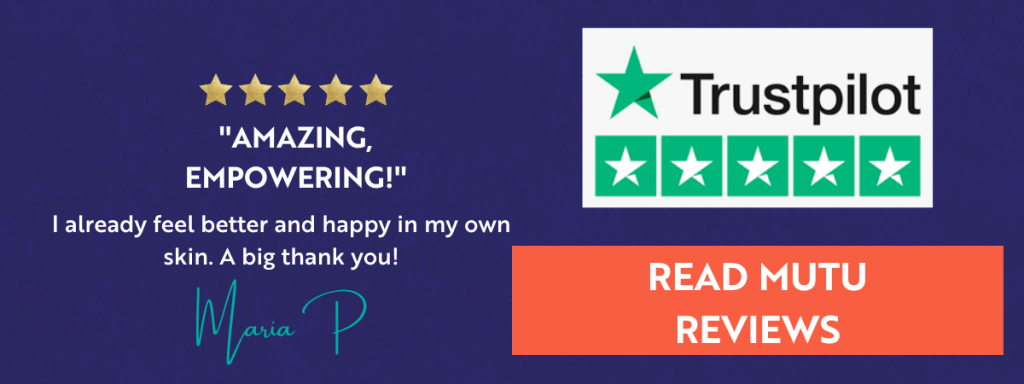
More progressive concepts like MUTU System say ‘don’t tuck your tailbone’… stick your butt out instead!
How to engage your core (spoiler: don’t tuck your tailbone)
Here’s a little ‘Am I engaging TVA correctly?’ challenge for you instead. Stand sideways to that mirror. I want you to ‘engage your core’ without moving your pelvis. It’s harder, right?
Because ‘engage your core’ doesn’t mean, ‘suck your stomach in’ and it doesn’t mean ‘tuck your tail bone under’ or squeeze your butt. It means drawing your belly button back VERY GENTLY (this really is a very subtle movement, not a forceful one. If you’re not sure, draw it back, then halve that. Or imagine a line between your hip bones that you’re going to draw together… (yes, you should feel your pelvic floor lift when you do this – that’s good!)
Try not to let your pelvis tuck under. Breathe out slowly and steadily, and draw your belly button in… but keep that natural curvature in your spine. It’ll feel like you’re sticking your backside out at first.
Try this
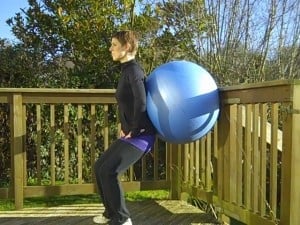
Kneel astride a large cushion or bolster, sitting on the front of a chair or on a fit-ball. Sit upright on your sitz bones, not on your sacrum with a curved back. Then try to very gently engage your TVA muscle, without tilting your pelvis and rolling onto your tailbone.
Also, try squatting from a standing position but supporting your back with a ball behind you, as shown in the picture.
Why you’ve got to find your core before you can strengthen it
You see, there is a difference between ‘finding your core and ‘working your core’. If you haven’t found it, you can’t work it. Our brain forgets how to talk to some muscles in our body after pregnancy and childbirth because they have been unused, in a position not be able to work optimally, or taking up the strain of other imbalances. But our body can’t use a muscle that our brain has stopped talking to.
‘Don’t tuck your tailbone’ WHY?
Tucking your pelvis under and/or squeezing your butt shortens the pelvic floor muscles. If you can visualise, your pelvic floor muscles are a hammock of musculature attached at your tailbone at the back and your pelvic bone at the front. So curling your pelvis underneath you shortens and tightens the muscle by bringing your sacrum/tailbone closer to your pelvic bone.
It’s engaging or contracting your pelvic floor muscles, and keeping them there.

Why you DON’T you want to engage your pelvic floor all the time
- A tight muscle is not a strong muscle – your pelvic floor needs to be both supple and strong, able to work in its full range of motion. Pelvic floor exercises should be a synchronised ‘lifting’ effort of all your deep core muscles working together, not an isolated squeeze. Tucking your tail under keeps it permanently short and tight.
- Your TVA cannot work correctly if your pelvis is tucked under. Similarly, your TVA does not create this movement. So, being in the tucked-under position is doing nothing for your core muscles.
So, squeezing and tucking is not helping your pelvic floor, and it’s not helping your core.
Squatting
Try squatting, and watch yourself in the mirror again – your tailbone should head down and back, sure (don’t overarch your back and stick it up), but not under. Watch yourself and try to maintain that natural curve of your spine as you squat. Aim to have your shins stay vertical, and use support if you feel unstable at all. Holding onto something solid, like a stair rail or a heavy table (or holding onto someone), with both arms in front of you is an effective way to support yourself, allowing you to focus on form rather than falling over!
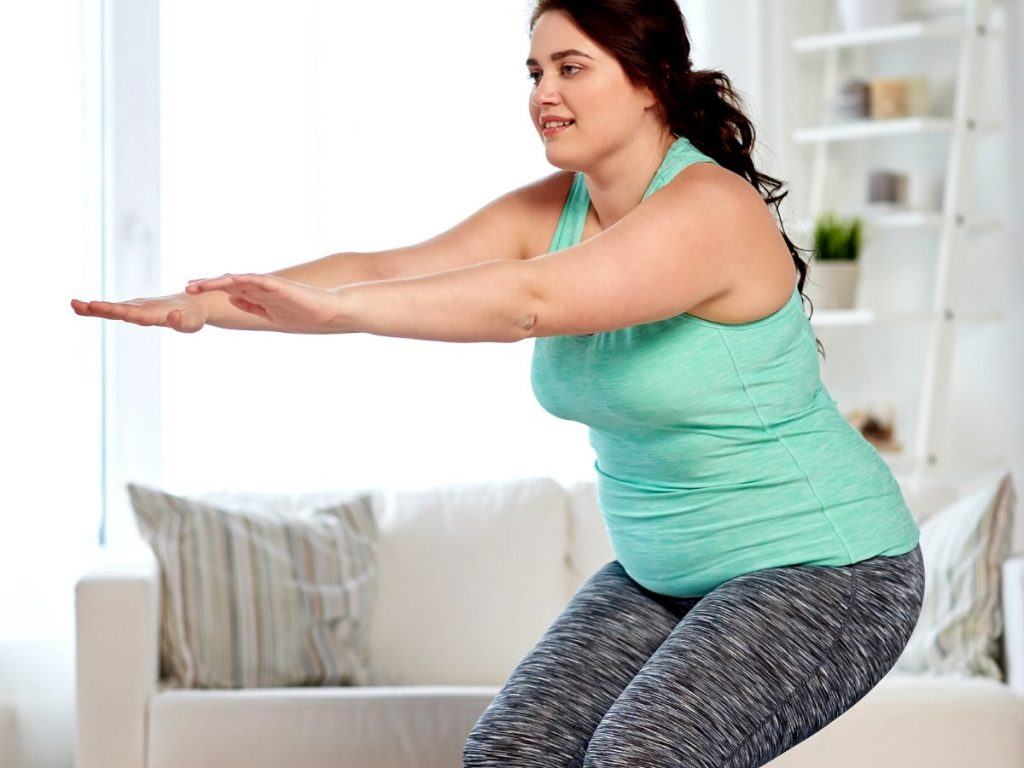
There are, of course, many natural and valid ways to squat, and a full, deep resting squat position or an Olympic lifting squat, for example, will not necessarily involve vertical shins or an entirely neutral spine. However, the above pointers are for you to develop a safe and effective squat that will serve you well in exercising, picking things up, lifting, and general movement. As you squat, your core and your glutes develop in functionality, response and strength. By all means, experiment further!
So there you have some Butt Homework to be going along with as you start working towards a flat tummy and a perky butt, not the other way round.




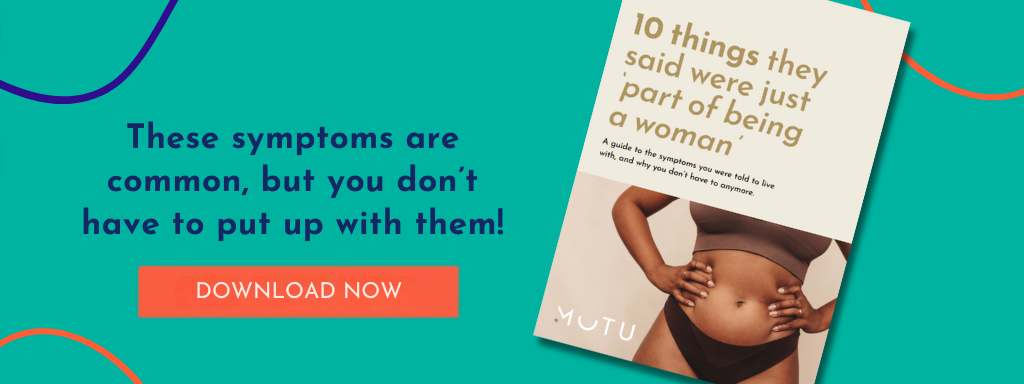


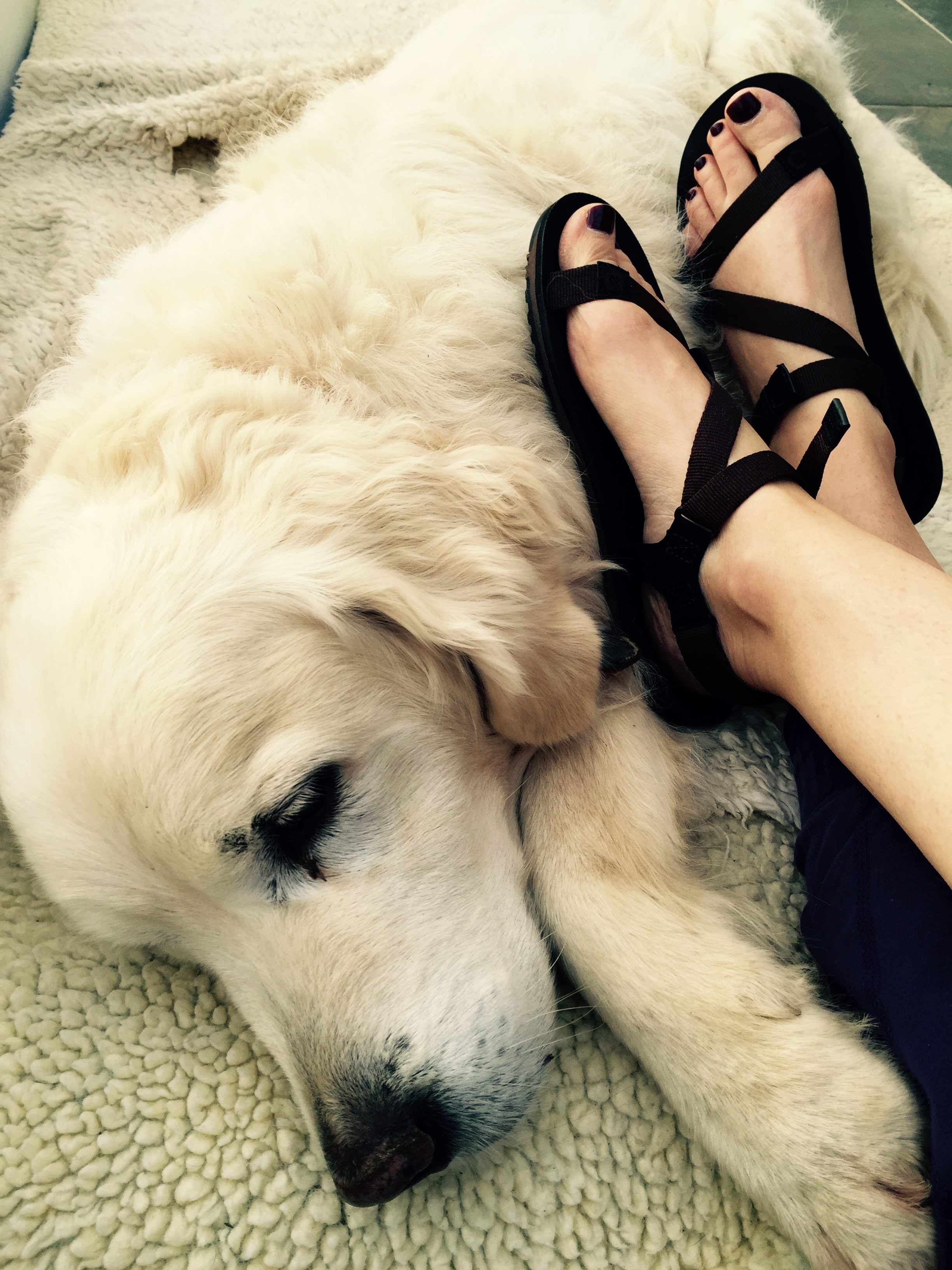
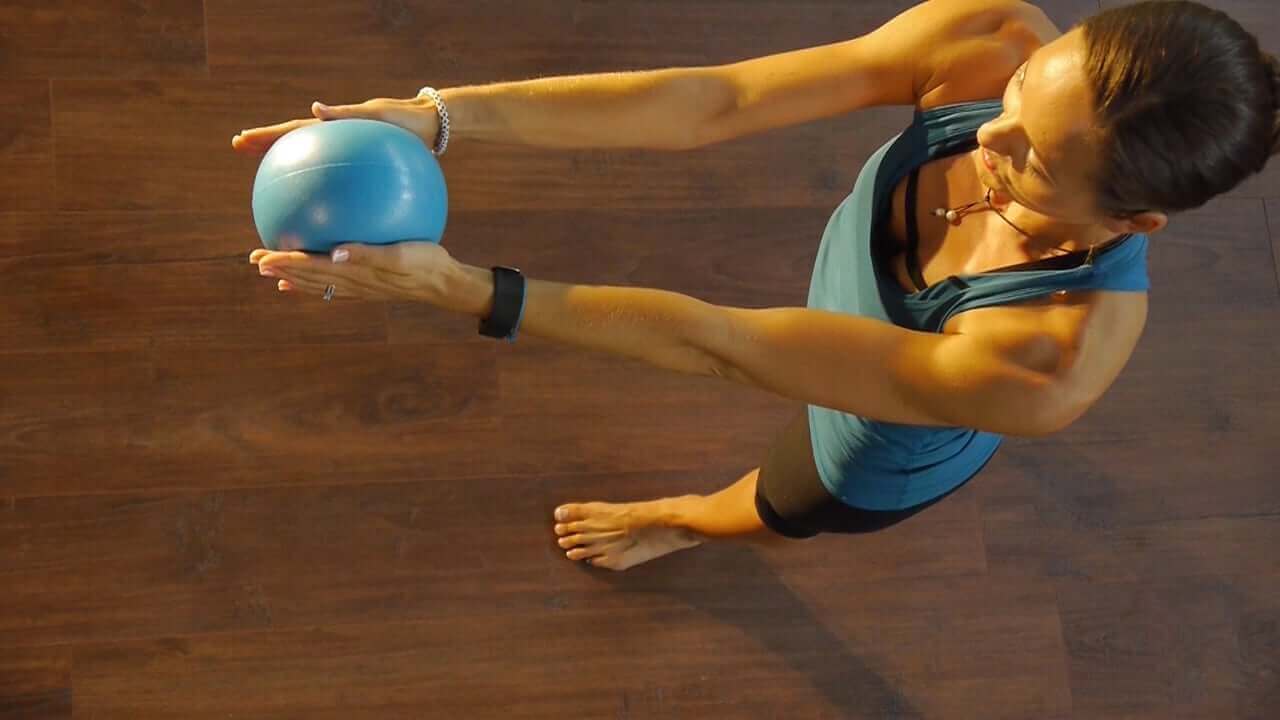




Thanks Will 🙂
Wow. Well, you certainly took that criticism better than most. I’m sure you’ll continue to learn and grow a great deal with that sort of a positive attitude.
Wish you all the best!
I don’t squat with vertical shins and my glutes are very developed. I can certainly feel tension in them when I squat. And I’m pretty sure most Olympic lifters do too (definitely no vertical shins there). So, to simply say that you’re not using your butt if you don’t keep your shins vertical in the squat is simply incorrect.
Sticking your butt out does make the squat more hip dominant but it can also reinforce a hyper-lordotic posture in a lot of people and it also limits the range to which the squat can be performed. This whole generalisation of ‘vertical shins’ in the squat has to stop. Sure, it’s applicable to certain populations but not everyone.
Anyway, really good points on TVA and pelvic floor muscles. I agree that this tucking and sucking in is nonsense!
Thanks Will, this is really valid and I have taken out that piece as I agree it was misleading. I teach to aim for vertical shins as one of the initial technique cues, but of course I am not training Olympic lifters, but rather teaching a safe, progressive squat. By teaching the vertical shin, aiming for a flat foot (but with support under the heel if a flat foot cannot be achieved until calf flexibility allows), and using support to hold onto, I can teach a safer beginning position. But I agree that to say that the glutes ‘aren’t working’ unless the shins are vertical is indeed incorrect so I’ve amended. Thanks for your constructive comments 🙂
Hi, I am little confused with meaning of word “tuck”. Does it mean that you go with your sacrum little bit down and forward? That you literally make your lordosis flat?
I have seen a lot of exercises meant to be good for stretching your lower back and training movements of the pelvis, like tilting it backwards, when you are lying on your back, legs straight and trying to touch the ground with your lower back – this mean tucking it? tthe same in standing position and so on.
Thanks
I meant tailbone, not sacrum, sorry
Hie Wendy
I have a almost 3 finger and have been wanting to get the MuTu System.
All the workouts I follow(interval/strength) require me to squeeze my glutes. The reason mentioned by the instructor is so that I don’t hyper extend my back when doing the workouts.
After reading your article I am confused. Am I not supposed to squeeze my butt during workouts?
Could you please clarify? Looking forward to hearing from you.
God Bless
Jennifer
Hie Wendy
I have a almost 3 finger diastasis recti and have been wanting to get the MuTu System.
Most of the workouts I follow(interval/strength) require me to squeeze my glutes(eg. dumbell swing,high puls, hip brindge etc.). The reason mentioned by the instructor is so that I don’t hyper extend my back when doing the workouts.
After reading your article I am confused. Am I not supposed to squeeze my butt during workouts?
Could you please clarify? Looking forward to hearing from you.
God Bless
Jennifer
Hi Jennifer, please see my answer to Amanda below 🙂
Hie Wendy
I have a almost 3 finger and have been wanting to get the MuTu System.
All the workouts I follow(interval/strength) require me to squeeze my glutes. The reason mentioned by the instructor is so that I don’t hyper extend my back when doing the workouts.
After reading your article I am confused. Am I not supposed to squeeze my butt during workouts?
Could you please clarify? Looking forward to hearing from you.
God Bless
Jennifer
Hi Jennifer, please see my answer to Amanda below 🙂
I’m super confused. I’m an avid lifter and an exercise science major. From what I’ve understood anterior tilt is common and not a good thing so squeezing the butt and trying to get some posterior tilt in especially during exercises like glue bridges is a good thing and recruits more glute muscles. But you’re saying they’re not?
Hi Amanda, I’m not saying its a bad thing to squeeze + work your glutes. Thats fine + yes it does work them harder to squeeze with a glute bridge for e.g.. But this article is about engaging your core, + the tilt / squeeze / tuck does nothing for your core engagement. It actually ‘takes over’ + means your deep core + pelvic floor is not recruiting optimally. So I’m not saying the butt squeeze is a bad thing. I’m just saying the butt squeeze isn’t helping you find your core!
I’m super confused. I’m an avid lifter and an exercise science major. From what I’ve understood anterior tilt is common and not a good thing so squeezing the butt and trying to get some posterior tilt in especially during exercises like glue bridges is a good thing and recruits more glute muscles. But you’re saying they’re not?
Hi Amanda, I’m not saying its a bad thing to squeeze + work your glutes. Thats fine + yes it does work them harder to squeeze with a glute bridge for e.g.. But this article is about engaging your core, + the tilt / squeeze / tuck does nothing for your core engagement. It actually ‘takes over’ + means your deep core + pelvic floor is not recruiting optimally. So I’m not saying the butt squeeze is a bad thing. I’m just saying the butt squeeze isn’t helping you find your core!
Hi! So should I only squat to the point right before my butt begins to want to tuck??
yes!
Hi! So should I only squat to the point right before my butt begins to want to tuck??
yes!
I started doing mutu focus and I love it. I feel like I have done a good job reconnecting my lower core but the muscles directly under my bellybutton still seems really weak. Are there specific exercises or movements that will help me focus on that area?
Hi Katy, if you’re not feeling it there then there is where you need to focus if you see what I mean! Try to visualise the muscles (re-listen to ‘the science bit’ if that helps), do the yoga breathing exercises from the audios as well & really hone in on your middle… just keep on working your body mindfully & with love & the feeling & connection will come back!
I started doing mutu focus and I love it. I feel like I have done a good job reconnecting my lower core but the muscles directly under my bellybutton still seems really weak. Are there specific exercises or movements that will help me focus on that area?
Hi Katy, if you’re not feeling it there then there is where you need to focus if you see what I mean! Try to visualise the muscles (re-listen to ‘the science bit’ if that helps), do the yoga breathing exercises from the audios as well & really hone in on your middle… just keep on working your body mindfully & with love & the feeling & connection will come back!
Hi Amber, sorry I missed this one! MuTu Focus takes just 10-15 minutes a day, but also includes alignment & whole body adjustments you will find yourself making in everyday movements + in other workout to make them more effective! Please re-build you core before twisting & jumping your way through Zumba… but once you have done, + you know how to use your core right when you do it – go for it!
Thanks for the quick reply! What do the daily exercises include and how long are they? Just trying to get an idea of what I would be getting into.
On a side note: I was thinking of joining a Zumba class in the new year with some friends – Is this safe to do with my separation?
I have a question Wendy. I have 3 children, all born via c-section and
my youngest is 14 months. I have lost all my baby weight, and I am
quite fit and slim (I’ve never had weight issues). My only concern is
my belly. I have remaining fat in this area, not to mention the muscle
separation, that makes me look 3-4 months pregnant on my bloated days.
Your system sounds great, but is the entire program necessary for me as
my belly is my only concern.
You want Mutu Focus – its designed for exactly your situation – its *just the tummy bit*! Get it online or on DVD here https://mutusystem.com/mutu-focus-program-the-essential-foundations-of-a-flatter-post-baby-tummy.html
I have a question Wendy. I have 3 children, all born via c-section and
my youngest is 14 months. I have lost all my baby weight, and I am
quite fit and slim (I’ve never had weight issues). My only concern is
my belly. I have remaining fat in this area, not to mention the muscle
separation, that makes me look 3-4 months pregnant on my bloated days.
Your system sounds great, but is the entire program necessary for me as
my belly is my only concern.
You want Mutu Focus – its designed for exactly your situation – its *just the tummy bit*! Get it online or on DVD here https://mutusystem.com/mutu-focus-program-the-essential-foundations-of-a-flatter-post-baby-tummy.html
Thanks for the quick reply! What do the daily exercises include and how long are they? Just trying to get an idea of what I would be getting into.
On a side note: I was thinking of joining a Zumba class in the new year with some friends – Is this safe to do with my separation?
Hi Amber, sorry I missed this one! MuTu Focus takes just 10-15 minutes a day, but also includes alignment & whole body adjustments you will find yourself making in everyday movements + in other workout to make them more effective! Please re-build you core before twisting & jumping your way through Zumba… but once you have done, + you know how to use your core right when you do it – go for it!
Excellent advice, superb workouts. Thanks for helping women the way you do.
Excellent advice, superb workouts. Thanks for helping women the way you do.
Excellent advice, superb workouts. Thanks for helping women the way you do.
i love that your referenced Katy Bowman and Diane Lee! I have been reading up on their work. have you taken any of their courses?
Not yet, I’ve been in touch with Katy but we keep missing each other by a few thousand miles! 🙁
i love that your referenced Katy Bowman and Diane Lee! I have been reading up on their work. have you taken any of their courses?
Not yet, I’ve been in touch with Katy but we keep missing each other by a few thousand miles!
Update September 2014: Now a fully certified Restorative Exercise Specialist™ following a year’s study with Katy Bowman’s work!
i love that your referenced Katy Bowman and Diane Lee! I have been reading up on their work. have you taken any of their courses?
Not yet, I’ve been in touch with Katy but we keep missing each other by a few thousand miles! 🙁
Gosh, I know that as an instructor here in the U.S. I have been told time and again to shoot for “neutral” spine not a tucked pelvis, but it’s still so tempting to “tuck it” when trying to activate the core. Occasionally I’ll have someone who is flaring their ribs sooooo much I’ll have them do some cats/cows to help them find neutral and feel the arch vs. the tuck. I appreciate how you laid out the anatomy of the pelvis a little bit for us, because I know there are some pelvic floor rehab “experts” who focus totally on the glutes, and it just doesn’t ring right with me. I think that’s just part of it.
Hi Bethany, I love the Cat posture too – for stretching, ‘finding’ the pelvic floor (some clients just find it easier to connect in that position) & as lovely relaxing, opening move that also encourages us to focus on, lift & draw in the core & PF. I love them! Thing is ‘finding neutral spine’ simply doesn’t mean anything to most people does it? 🙁 It’s like when an instructor says ‘ engage your core’ or ‘use your abs’ without explaining HOW) so I think we all need some more helpful visual or mental cues to find the right muscles. Glutes are vital to correct alignment & pelvic (floor) health of course, & often neglected – especially with everyone tucking the whole time! I really like the focus on alignment & working the body as a System though, not isolated moves & muscles. The whole body, working right: Squat often & squat well, & I reckon you have a lot of the above covered 😉
Gosh, I know that as an instructor here in the U.S. I have been told time and again to shoot for “neutral” spine not a tucked pelvis, but it’s still so tempting to “tuck it” when trying to activate the core. Occasionally I’ll have someone who is flaring their ribs sooooo much I’ll have them do some cats/cows to help them find neutral and feel the arch vs. the tuck. I appreciate how you laid out the anatomy of the pelvis a little bit for us, because I know there are some pelvic floor rehab “experts” who focus totally on the glutes, and it just doesn’t ring right with me. I think that’s just part of it.
Hi Bethany, I love the Cat posture too – for stretching, ‘finding’ the pelvic floor (some clients just find it easier to connect in that position) & as lovely relaxing, opening move that also encourages us to focus on, lift & draw in the core & PF. I love them! Thing is ‘finding neutral spine’ simply doesn’t mean anything to most people does it? 🙁 It’s like when an instructor says ‘ engage your core’ or ‘use your abs’ without explaining HOW) so I think we all need some more helpful visual or mental cues to find the right muscles. Glutes are vital to correct alignment & pelvic (floor) health of course, & often neglected – especially with everyone tucking the whole time! I really like the focus on alignment & working the body as a System though, not isolated moves & muscles. The whole body, working right: Squat often & squat well, & I reckon you have a lot of the above covered 😉